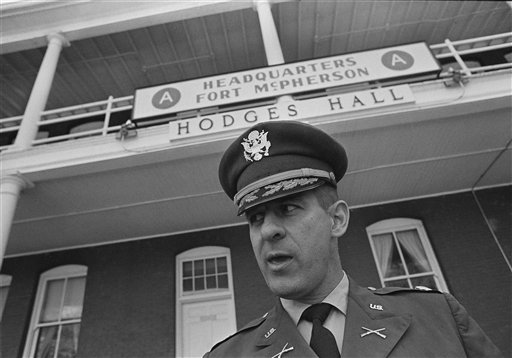In Herbert v. Lando, 441 U.S. 153 (1979), the Supreme Court held that there is no protection under the free speech and press provisions of the First Amendment shielding the editorial process used for new stories when the stories provoke libel charges.
Vietnam War Army officer sued CBS over libel
Anthony Herbert had sued the respondents, including CBS editor Barry Lando, because Herbert believed he had been defamed by a television documentary and articles. Herbert, an Army officer in the Vietnam War, had accused other officers of covering up war crimes and atrocities in Vietnam.
The “60 Minutes” program by CBS brought some of his claims into question. Herbert conceded that he was a “public figure” and therefore had to prove that the respondents had published damaging falsehoods about him with “actual malice.”
CBS sought to protect its editorial materials from pre-trial discovery
During the discovery process, Herbert sought to access materials related to the editing process of the stories. CBS refused to comply, claiming that the First Amendment protected them against inquiries into this process.
The district court rejected these claims, but the 2nd U.S. Circuit Court of Appeals ruled that the First Amendment did protect the editorial process. The Supreme Court then granted certiorari.
Supreme Court: No First Amendment ban on discovery in libel cases
Writing for a 6-3 majority, Justice Byron R. White said that the court of appeals had misinterpreted the Supreme Court’s precedents, such as New York Times Co. v. Sullivan (1964). Although the Supreme Court in Sullivan had meant to create a more difficult standard under the First Amendment to win a libel case, it had not meant to make it more difficult to gather evidence to determine when a libel had been committed.
Precedent did not suggest any First Amendment restriction on the sources from which a plaintiff in a libel case can obtain the necessary evidence to prove actual malice. Instead, it required that in order to prove that a defendant is liable, the plaintiff must focus on the defendant’s conduct and state of mind. This required plaintiffs to be able to inquire into whether a defendant knew or suspected that a story had falsehoods.
Therefore, a First Amendment bar on examining the editorial decisions that led to a story would only frustrate the intent of the Court’s earlier decisions.
Court rejected that discovery in libel cases would have chilling effect
The Supreme Court found unconvincing the respondent’s claim that subjecting the editorial process to discovery in libel cases would create a chilling effect on the editorial process. White wrote that if editors took extra care to avoid publishing knowing or reckless falsehoods because of their fear of liability, such a result would be consistent with the First Amendment.
Finally, the Supreme Court did not believe that the creation of a constitutional shield for the editorial process would help to combat the escalating costs that publishers had to put into defending defamation cases; only complete immunity from liability suits, which would be unacceptable, would do that.
In separate dissents, Justices William J. Brennan Jr., Potter Stewart, and Thurgood Marshall all sought to provide broader protection for the editorial process.
This article was originally published in 2009. Tom McInnis earned a Ph.D. from the University of Missouri in Political Science in 1989. He taught and researched at the University of Central Arkansas for 30 years before retirement. He published two books and multiple articles in the area of civil liberties and the American legal system.

